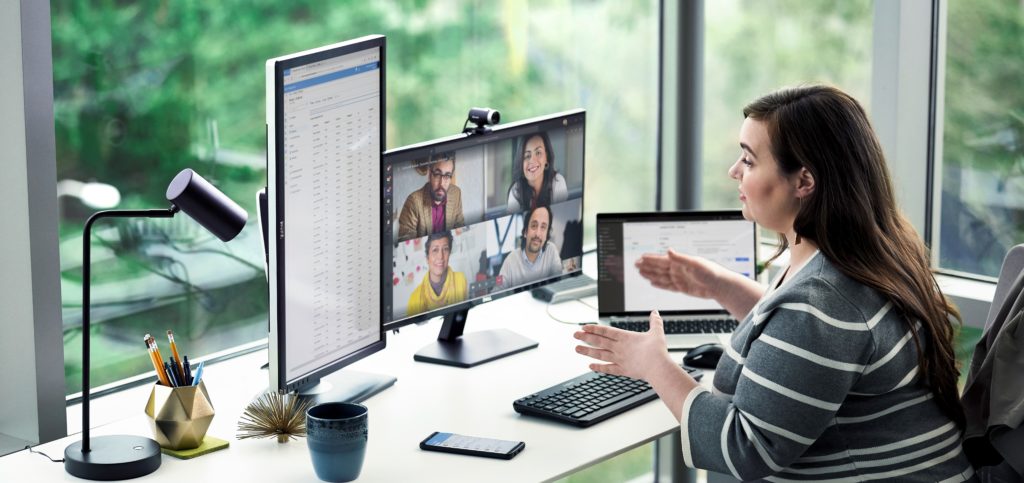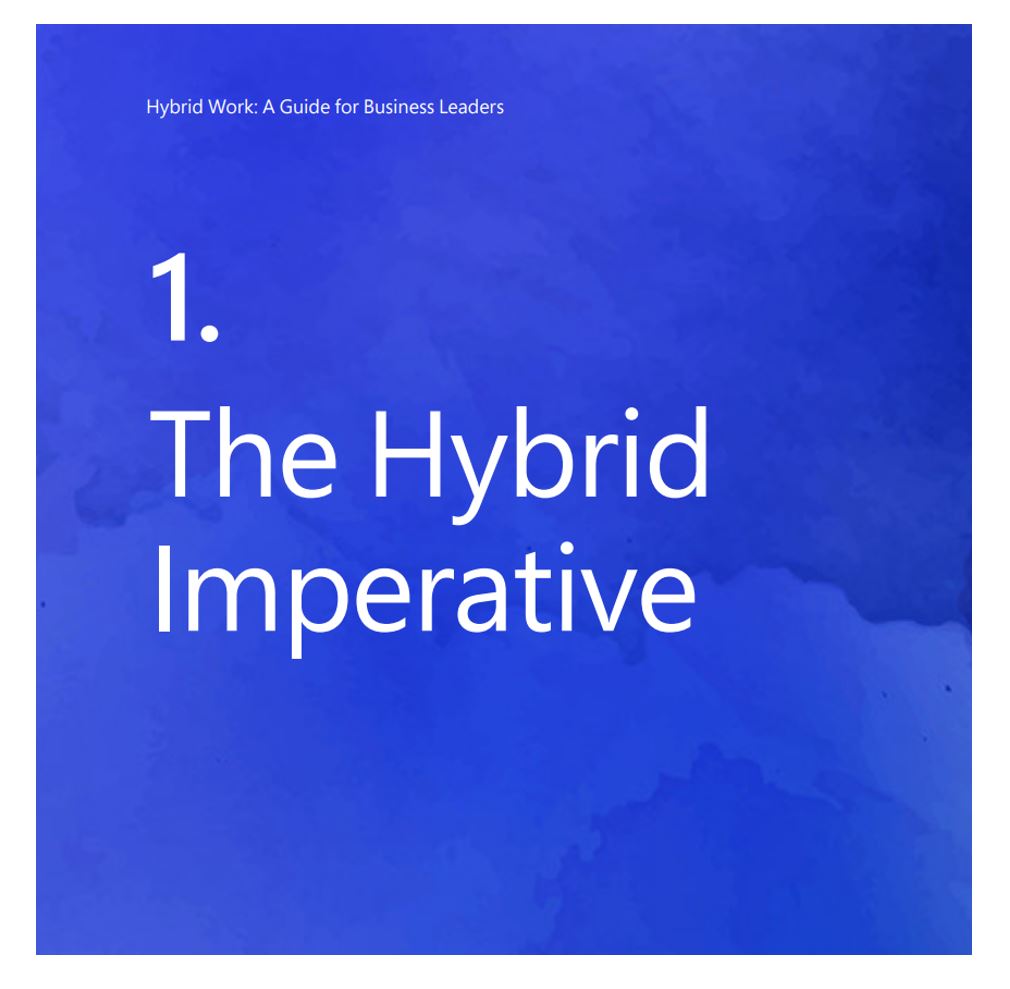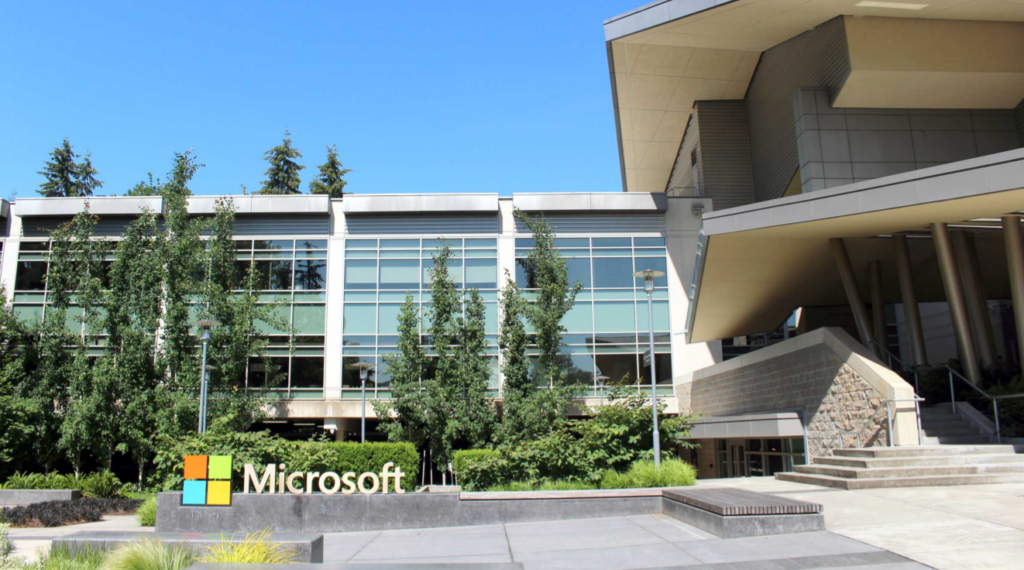
October 6, 2020
In Microsoft Denmark, data and inclusion are key to navigating disruption
Editor’s Note: COVID-19 continues to have a tremendous impact on people and communities around the world, challenging us to adapt to worksite and school closures, travel and gathering restrictions, and erosions of the boundaries between work and life—all at once. So, what does a cross-functional team of engineers, data scientists, analysts, and marketers that lives in the space between workplace culture and data do when presented with the world’s largest work-from-home shift? It, well, does its homework. In this blog series, we’ll share real-time learnings as we measure the impact of this unprecedented shift away from the office, and back again, on how Microsoft employees work, connect, and balances our lives. We hope these insights will teach us something about how work is changing and help us all get through this, together.
Like other organizations, Microsoft Denmark was not expecting to suddenly send its employees to work from home offices, kitchens, and living rooms earlier this year. But from that first, unexpected day of remote work, leaders knew that in order to support not only employees but also customers, they would have to learn what people and teams needed most to feel connected and collaborate effectively.
Months after that pivot, the 700-person organization has re-imagined how it functions. On a recent call, Microsoft Denmark General Manager Nana Bule, Communications Director Ditte Namer, and Human Resources Lead Camilla Hillerup appeared in discrete Teams boxes to talk with us about the experience of working remotely and the subsequent soft re-opening of offices. With distinct backgrounds in their own video squares—a green-and-sand-colored block wall, floor-to-ceiling glass, and a squiggly abstract painting— it looked like everyone had joined the meeting from a private location.
But looks can be deceiving. Toward the end of the call, Bule swung her computer camera around to reveal Namer sitting nearby, just at the other end of a shared conference table. The Denmark offices are equipped with high-tech, responsive conferencing tools that can capture a roomful of meeting attendees with ease. So why did we, on the other end of the call, only see the co-workers appear separately? Inclusion.
“We’re in the same room, but we chose to each have our own camera on, so that it feels like we are all working under the same circumstances,” Bule said. “We have more complexity now, with some employees being at home, some being in the office, some in the same office but different rooms.” In a physical office, she explained, meeting attendees in a single room can easily engage with each other, get up to use a whiteboard, and read social cues to intuit who wants to speak. The new and fast-evolving hybrid model requires an added layer of conscientiousness to achieve the same experience. “To really practice this hybrid model of work, here and with all our customers, is another change curve.”
To find balance, we wanted to stay close to everyone.
The focus on inclusion has been one of three central beacons for Microsoft Denmark’s leadership as it navigated through disruption. Unwavering customer focus and supportive leadership are the others. To follow this three-pronged North Star, the team relied on two key inputs: listening closely to employees about their experiences and needs; and data, to quantify how work was shifting and get beyond a one-size-fits-all mentality.

Nana Bule, Microsoft Denmark General Manager
Stability through leadership
As companies move to new ways of working, leaders are trying to find effective ways to maintain productivity while prioritizing employee wellbeing and nurturing engagement. For leaders in the Denmark subsidiary, which includes a wide variety of workers, a development center, a quantum lab, and a team of sellers, this meant first quickly establishing regular communication to support employees once the office closed. Daily emails from HR helped translate and contextualize critical government and health news to a 50 percent non-Dane workforce, and weekly All Hands meetings, an employee survey, and extra manager support aimed to keep people connected and help them feel seen.
“To find that balance, we wanted to stay close to everyone,” Hillerup said.
Once these leadership foundations were in place, Microsoft Denmark leaders sought to assess how work behaviors were shifting so they could tap more deeply into what individuals and teams truly needed not only to survive, but to thrive through waves of transition. A massive shift had taken place, and another one—a staggered return to the office as Covid risks reduced—was around the corner. How were people impacted? Were they working more? Unable to focus? Able to support customers? Were people maintaining their connections?
Early themes were already emerging from observations, conversations, and an employee survey: Managers’ workloads were a concern, and some teams seemed less connected than others in the new remote environment.
These anecdotes led to hypotheses and more questions. To find answers, leaders turned to Workplace Analytics, which uses aggregated, de-identified calendar, email, and instant message metadata to measure changing patterns in everyday work.
Starting at the surface
First, the team sought to uncover the broad trends. They learned that while the time people spent in email stayed about the same, meeting time had increased about 9 percent across their group once people went remote—an average of one hour more per week per person. This increase appeared to have happened more or less equally for individual contributors and managers, though managers had less room to maneuver their time because they already experienced higher meeting loads. A 35 percent increase in the use of instant messages for both 1:1 and group communications was also revealed. Leaders hypothesized that the collaboration increase was driven by people replacing what used to be unscheduled, face-to-face office conversations with digital ones.
Finding: Meeting time increased an average of 1 hour a week per person, and instant messages were up 35 percent.
The data seemed positive: While collaboration had increased some, the average lengths of people’s workweeks didn’t spike the way they had in some other locations, nor was the workforce as a whole working more evening hours, a sign that work-life integration is suffering.
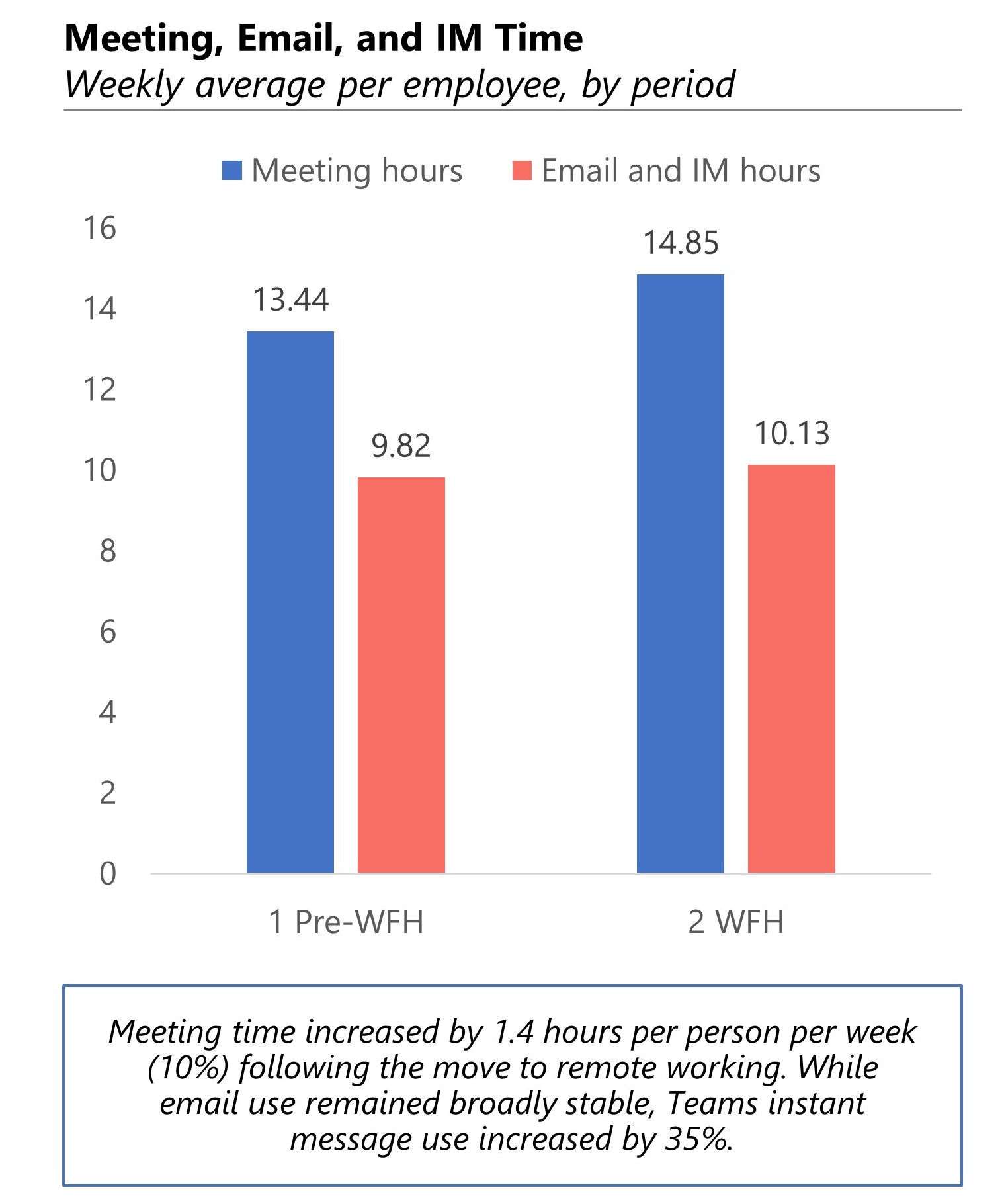
With customer service as a central beacon, leaders also wanted to understand what was happening with external connections—were employees able to maintain their external networks, critical to customer service and satisfaction?
Data allowed us to ask the right questions.
Finding: External collaboration increased, and networks grew.
Measuring the changes since remote work began, the team found that collaboration hours with customers and partners had increased 7 percent. The insights also surfaced another positive piece of news: After the shift to remote work, external network size (the average number of people with whom employees have meaningful interactions) grew 8 percent, and network breadth (the average number of organizations an employee connected with) grew 7 percent. Despite the disruption, employees were prioritizing connections to meet the needs of customers and partners.
“We learned a lot about which types of meetings and workshops work really well virtually,” said Jakob Falkesgaard, a senior customer service manager, who was experiencing in real time how to optimize remote work while simultaneously advising customers on the same. “For instance, you can really lose the energy of a team if you do not facilitate meetings right. If you do it well, you can be so inclusive that everyone feels like they are around the table. We focused on bringing that storyline and capability to customers.”
Looking more deeply
It was clear that remote work hadn’t suddenly sent all Microsoft Denmark’s employees into overdrive, and that critical connections to customers and partners were being protected. But leaders knew that people were facing a variety of challenges, and that some were likely struggling. To truly understand how this rapid shift in ways of working was impacting people, they would have to go beyond a one-size-fits-all mentality.
Using the data, the Denmark leadership and Workplace Analytics teams grouped employees into seven groups based on changes in their collaboration activity and their length of weeks. To ensure employee privacy and look at broad trends only, the analysis was done with anonymized data, aggregated in groups of a minimum of 10 people or more.
It was then that a powerful story emerged. While the overall impact on the workforce as a whole was fairly mild, the abrupt break in routine and sudden isolation from their teams had actually affected employees from Microsoft Denmark in measurably different ways.
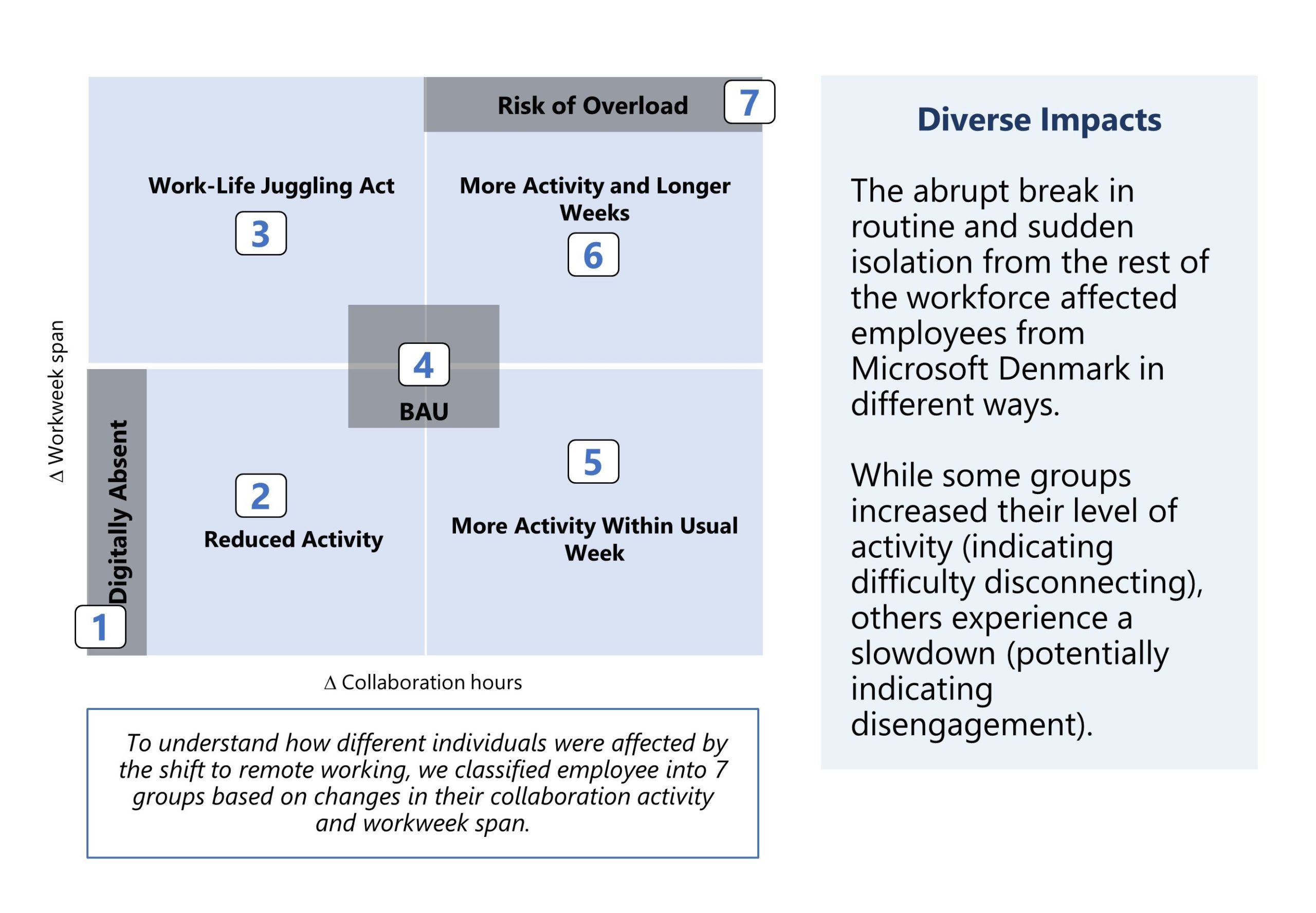
Finding: On aggregate and within each team, the response to remote work varied widely. While about a third of employees maintained steady collaboration and work levels, others saw reduced activity, and another third experienced a significant increase in collaboration.
The results of the classification and analysis showed that, once work went remote, only 35 percent of employees (the Business As Usual, or BAU, group) had been able to continue with the level of collaboration and the workweek length that was within their usual historical patterns.
Some employees, meanwhile, were experiencing a reduction in activity and lower workweek spans. The classification showed that 30 percent of the workforce experienced less-than-usual collaboration activity. Of that group, about 15 percent had shifted their collaboration to the early mornings and evenings, indicating a struggle to simultaneously meet their work and personal responsibilities.
Yet another 35 percent had experienced a significant increase in collaboration, and of those, about half also experienced longer weeks. A subset of this group was classified as being at high risk of overload: They saw their workweeks lengthen by 7 hours on average and were collaborating 8 hours a week more than before they had begun working from home.
“Data allowed us to identify these groups and ask the right questions. For those working more than usual: How long can you continue to work at twice the speed?” Bule said. “And for parts of the organization that were less connected: How do we support them? Are we close enough to all of our people? With this knowledge, we could take action.”
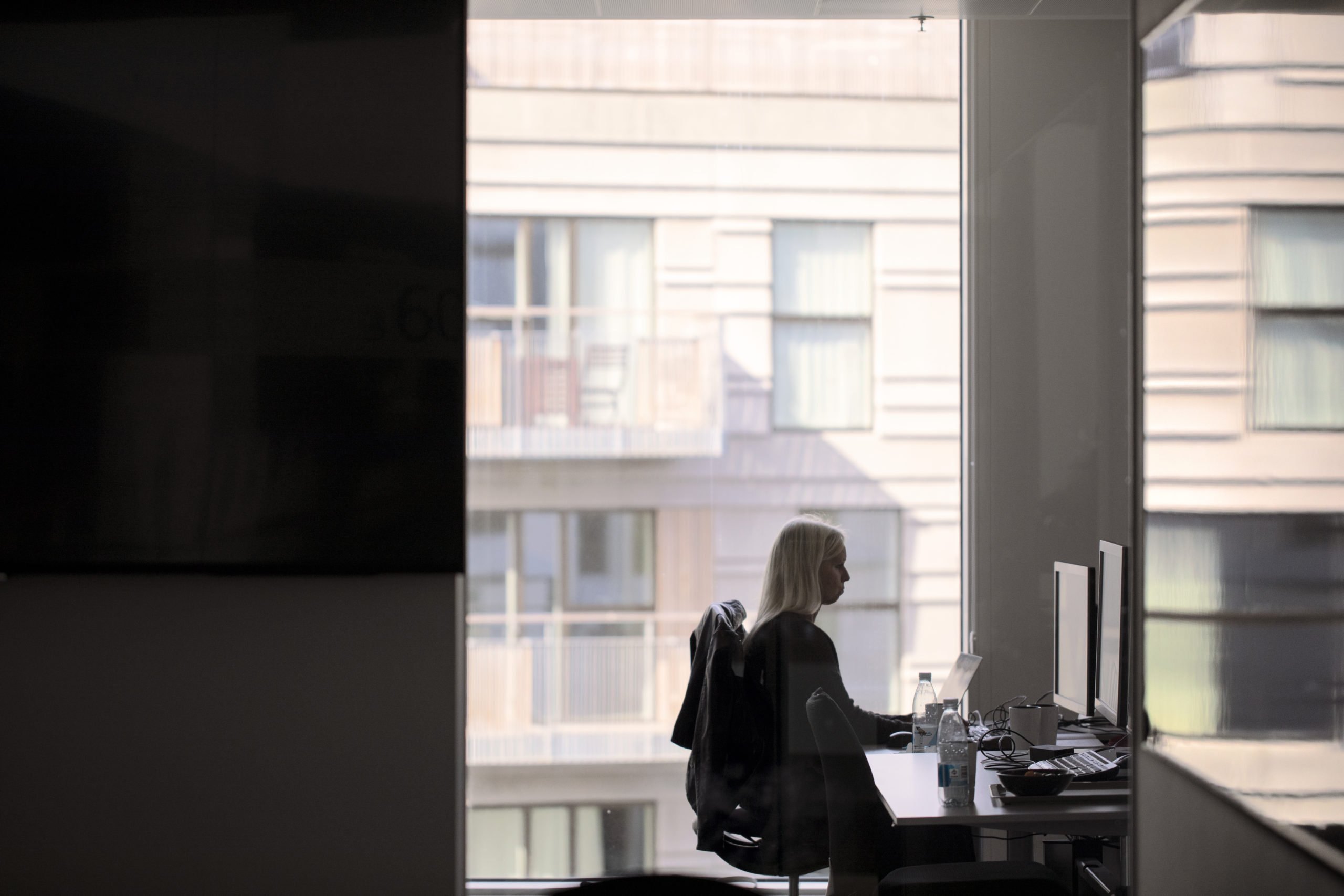
Finding: Based on shifts from remote work, managers were found to be at higher risk of overload.
The data revealed that the impacts of working from home weren’t concentrated around a specific group or role. There were employees navigating different challenges across all functions, roles, and levels of seniority. That said, the data also confirmed what leaders had heard anecdotally: managers were bearing a brunt of the negative impacts—for example, 27 of the employees in the high risk of overload bucket were managers, though they only represent 17 percent of the team’s overall population.
With this objective understanding of how employees were adapting differently to the shift in work, leaders could decide where to intervene to help. “It’s fantastic to have data on organizational productivity and health,” Bule said. “This is a topic that is top of mind not only for us, but for our customer CEOs. The insights validated and reinforced some of our hypotheses.”
Taking action
Leaders began sharing the broad, aggregated work trends weekly with Microsoft Denmark people managers. With this understanding of what their employees were experiencing, managers could start to tailor their actions to what the data showed their teams needed.
In conjunction with sharing these insights, leaders also increased the organization’s emphasis on manager 1:1s, which they knew help direct reports feel connected and prioritize work in complex work environments.
In addition to the regular 1:1s he had with his direct reports, Falkesgaard, like some other managers, also established a daily optional morning check-in to take the temperature of his team. This was a time people could talk holistically about what they were facing, inside of work and out. “It was here where I was seeing the clearest signals if people were having challenges,” Falkesgaard said. Along with these meetings, new team-specific chat channels helped facilitate community and keep employees connected day to day.
The increased emphasis on 1:1s worked: In February, before the remote shift, Workplace Analytics data had shown, 67 percent of employees had a 1:1 with their manager. This number increased to 87 percent in March; by May 97 percent had a 1:1 with their manager.
But would it make an impact on some of the challenges remote work had introduced? Soon leaders would find out.
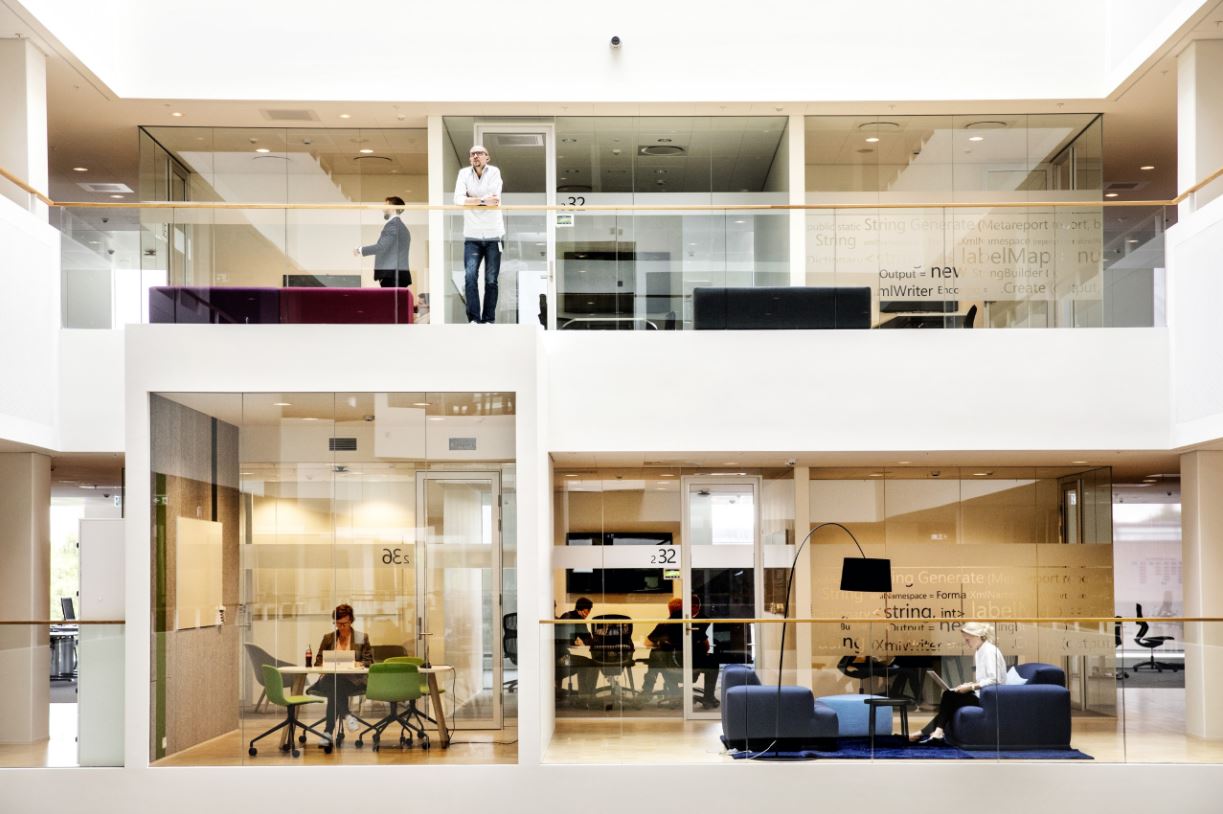
Measuring impact
Two months after moving to a remote-work model, employees began a staggered return to Microsoft Denmark offices. Based on workspace capacity and individual employee needs, some people continued to work some days from home while others were co-located again.
At this stage, the team had three periods to analyze: The way work happened before Covid-19, the shift in work during the 100 percent remote period, and the new patterns during the hybrid return to office phase.
Finding: The negative impacts of remote work on some teams began to subside, correlated to those groups whose 1:1 time with managers increased.
One key finding surfaced: The abnormal activity levels for the 276 employees that were classified in groups 5, 6 and 7—those who had experienced significantly more collaboration activity, longer workweeks, and were at risk for overload—started to recede during the hybrid period.
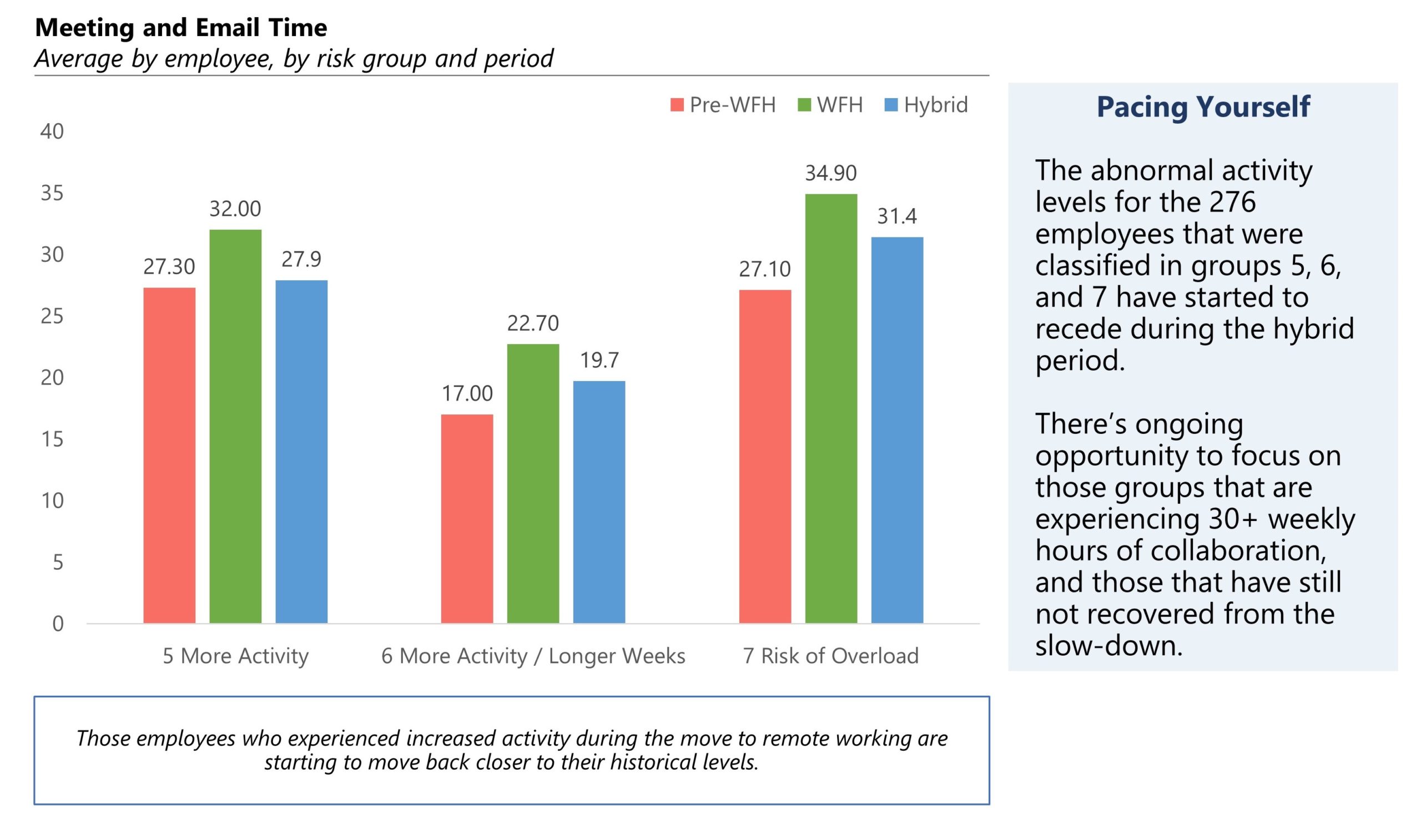
Leaders were curious why, and the data revealed the focus on manager 1:1s was a key factor: As managers’ 1:1 time with their direct reports increased in May, the average collaboration load (time spent in meetings and emails) also decreased. And those who had frequent 1:1s (one hour or more per month since March) were less likely to have low levels of activity and collaboration—signs of disengagement. This indicates that managers, by devoting more time to employees, enabled better prioritization, more engagement, and quicker resolution of issues.
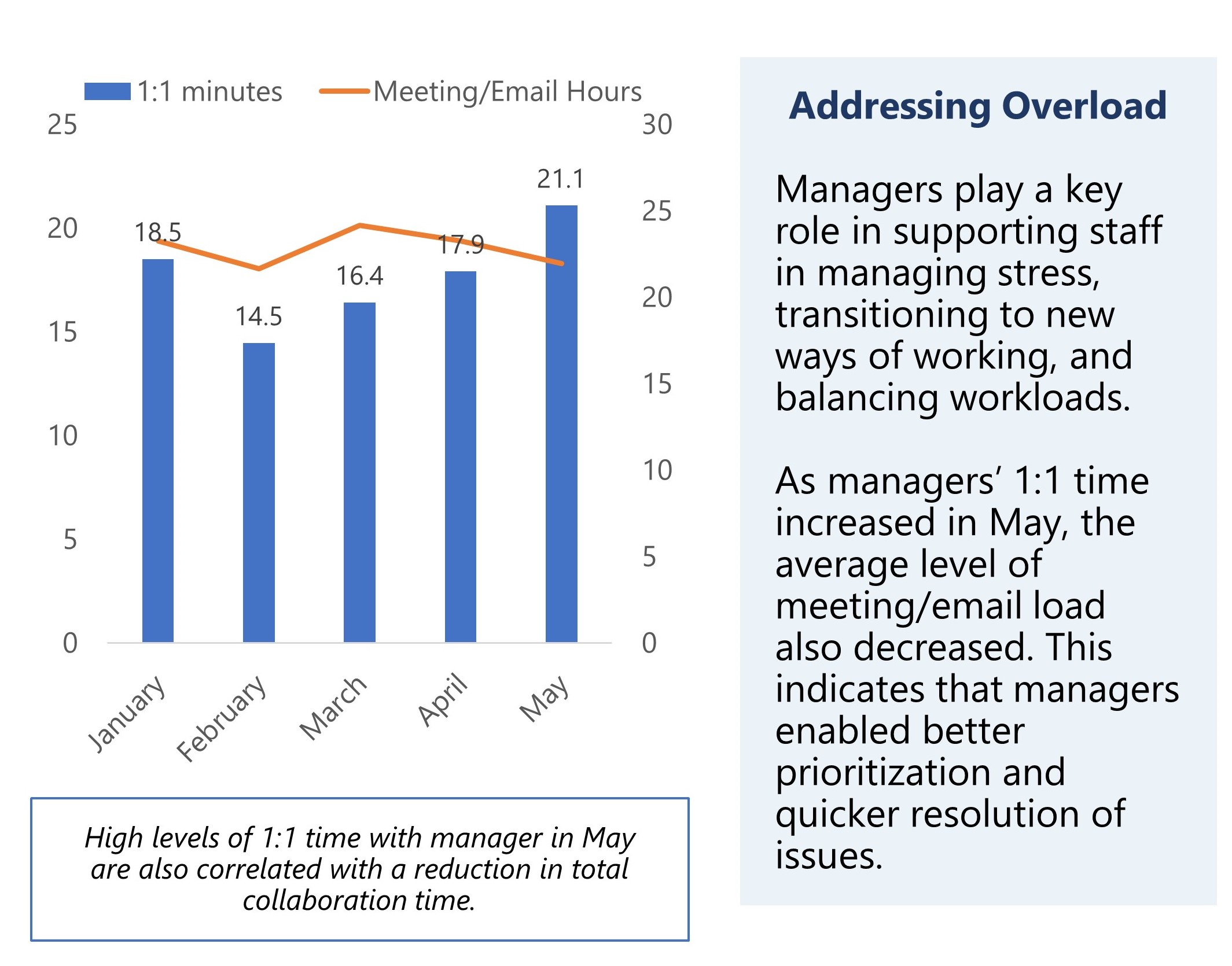
Pushing ahead
With the staggered return to the office, the disruption and its impacts are not over. Post-soft-opening analysis showed, for instance, that meeting hours and IM use were still higher than in the pre-Covid period. And the Denmark team returned to fully remote for a period of time in September in response to changing Covid patterns. Hybrid looks to be the norm for the future, which brings its own challenges.
“My most challenging time was when we had half the team coming in one week, half the team the other week,” Falkesgaard said. “It is critical that no one ever feels that we have primary and secondary participants.” His frequent team chats and daily check-ins to keep everyone connected continue.
It’s fantastic to have data on organizational productivity and health. This is top of mind not only for us, but for our customers.
Microsoft Denmark, like many organizations, will continue to strategize how to adapt its workspaces, processes, and practices to build resilience and support wellbeing. Leaders will continue to use Workplace Analytics and listen to employees to quantify how shifts in work are impacting teams and to answer new questions such as: How connected do people feel? Where are networks strong? Where is collaboration most intense?
“And all the while,” Bule said, “we will remember to be inclusive.”
Methodology: To help us chronicle the journey at Microsoft, we draw on data from Workplace Analytics to help quantify the impact on collaboration, networks, and focus; explore the lived experiences of our teammates through surveys and interviews; and tap into the knowledge of experts where it helps our understanding.
Research Leads: Kevin Sherman and Kate Nowak
Series Editor: Natalie Singer-Velush




